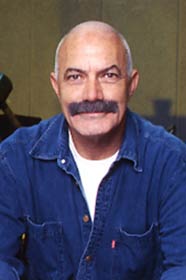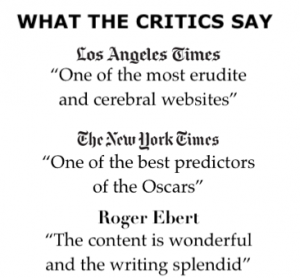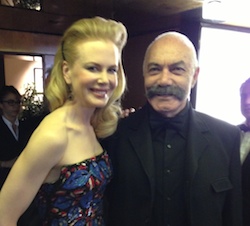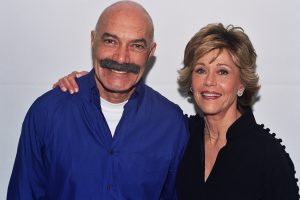Research in Progress: Oct 31, 2021
William Dieterle Career Summary:
Occup. Inheritance: No
Social Class: working class (poor)
Family: youngest child of 9
nationality: German Jew
Education: early interest in theater
Training: Actor for Max Reinhardt
First Film: 1923, age 30, German; U.S.; back to Germany
First Oscar Nomination: Life of Emile Zola, 1937; age 44
Other Nominations: No
Genre (specialties): Biopics
Collaborators: Paul Muni. Edward G. Robinson
Last Film: U.S. 1957; age 64; German Film, 1960; age 67
Contract: Warner; Selznick
Career Output: silent and sound
Career Span: Four decades (silent and sound)
Marriage: actress
Politics: Liberal (blacklisted)
Retirement: 1965
Death: 1972; age 79
A German-born actor and film director, William Dieterle emigrated to the U.S. in 1930 to leave a worsening political situation. He worked in Hollywood as a director for much of his career, becoming a U.S. citizen in 1937.
He moved back to Germany in the late 1950s.
His best-known films include The Devil and Daniel Webster, The Story of Louis Pasteur, and The Hunchback of Notre Dame.
The Life of Emile Zola won the 1937 Best Picture Oscar.
Poor Childhood
Wilhelm Dieterle, born on July 15, 1893 in Ludwigshafen, was the youngest child of 9, to factory worker Jacob and Berthe (Doerr) Dieterle. As a child, he lived in poverty and earned money by various means, including carpentry and as scrap dealer.
He became interested in theater early and would stage productions in the family barn for friends and family.
At the age of 16, Dieterle joined a traveling theater as handyman, scene shifter, and apprentice actor. His striking good looks and ambition paved his way to play roles as leading romantic actor in theater productions.
In 1919, theater director Max Reinhardt hired him as actor for his plays until 1924. He began acting in German films in 1921 and became a popular character actor. He usually portrayed “country yokels” or simpletons, but he was ambitious to begin a directing career.
In 1921, Dieterle married Charlotte Hagenbruch, an actress and later screenwriter.
First Film
In 1923 Dieterle used his own money to make his first film, Der Mensch am Wege. Based on a Leo Tolstoy short story, the film co-starred a young Marlene Dietrich.
In 1924 Dieterle left Reinhardt’s company and formed his own theater company in Berlin, but it was unsuccessful and short lived.
He returned to film acting for several years and appeared in notable German films as Das Wachsfigurenkabinett (Waxworks) (1924) and F. W. Murnau’s Faust (1926).
In 1927, Dieterle and his wife formed their production company, Charrha-Film. Dieterle returned to directing films, such as the gay-themed Sex in Chains (1928), in which he also played the lead role.
In 1930, the political and economic situations in Germany worsened, and like other industry figures, Dieterle and his wife emigrated to the U.S. Dieterle had said, “It was a running joke in Berlin…if the phone rang at restaurant they said it must be Hollywood. Well, one night my wife and I were dining out and it really happened.”
Dieterle was offered a job at First National to make German-language dubbed versions of Hollywood films, as the studios feared losing foreign business with the advent of sound.
But when Dieterle, his wife and a group of actors arrived, they found that the films had already been dubbed. They were chosen as actors in German-language versions of four Hollywood films, including Lloyd Bacon’s Moby Dick (1930), in which Dieterle played Ahab.
After the four films were completed, Warner’s Vice President of Production Hal B. Wallis was so impressed that he invited Dieterle to stay in Hollywood.
He became a U.S. citizen in 1937.
First Hollywood Film
Dieterle adapted quickly to Hollywood filmmaking and directed his first film, The Last Flight in 1931. The film depicts four American fighter pilots in Paris after World War I trying to put their lives back together. It starred Richard Barthelmess and Helen Chandler. Although not a success on first run, it was hailed as forgotten masterpiece at a 1970 revival screening.
Dieterle’s initial Hollywood career was neither successful nor notable. It included such films as the W. C. Fields musical Her Majesty, Love (1932), Jewel Robbery (1932), Adorable (1933), and Fog Over Frisco (1934) with Bette Davis.
In 1934, Max Reinhardt was staging A Midsummer Night’s Dream at the Hollywood Bowl in Los Angeles. Dieterle convinced Warner to finance a big budget version of the film with an all-star cast. The film revitalized Dieterle’s career and he became major Hollywood director. Starring James Cagney, Olivia de Havilland, Joe E. Brown and Mickey Rooney, the film got mixed reviews for its “Americanization” of Shakespeare, but was a success on release. It is now considered a classic. During production, Reinhardt would rehearse the actors and then let Dieterle direct the film.
Biopics
Dieterle directed the first of his hugely successful “biography films” with actor Paul Muni, beginning with The Story of Louis Pasteur (1936). The film stars Muni as the scientist who discovered the principles of vaccination and struggled against a skeptical medical community. The film was critically and financially successful, and earned Muni Best Actor Oscar. It also helped to establish Warner as a producer of “prestige pictures” after a decade of crime dramas.
Dieterle was asked to direct films which he did not like; he said “at Warners the moment you had a success they gave you something terrible to keep you from getting a swelled head.” These films included the second version of Dashiell Hammett’s The Maltese Falcon, Satan Met a Lady, with Bette Davis, The Prince and the Pauper, and bio-pic about Florence Nightingale, The White Angel.
Oscar Nomination
Dieterle made another bio-pic with Paul Muni, The Life of Emile Zola (1937). Based on the life of the French philosopher and novelist Zola, the film explores Zola’s response to the Dreyfus affair, in which the falsely accused and convicted Jewish French officer was found guilty of treason and imprisoned. The film was an enormous success and critic Frank S. Nugent ranked it as “the finest historical film ever made and the greatest screen biography.” It was nominated for 10 Oscars and won for Best Picture, Best Supporting Actor for Joseph Schildkraut (as Dreyfus) and Best Screenplay. Dieterle lost the award for Best Director to Leo McCarey. It was his only nomination.
Blockade (1938)
Blockade, starring Henry Fonda as a dedicated Loyalist fighter and Madeline Carroll as the reluctant Franco spy who falls in love with him during the Spanish Civil War. The film was openly anti-fascist and critical of nations that stood by and let fascist dictators commit atrocities. Its 1938 premiere at Grauman’s Chinese Theater was abruptly cancelled, and it was controversial upon release.
During the Hollywood Witch Hunt of the late 1940s and 1950s, it was cited as suspicious by Congressional committees investigating communist influence; both Dieterle and the writer were viewed negatively then.
Juarez (1939)
Juarez was the third biographical picture that Dieterle made with Muni, depicting the life of Mexican politician Benito Juárez and his conflict with Emperor Maximilian I. Upon its release, Dieterle was called “the quintessential liberal director of the 30s.” When interviewed in the 1970s, Dieterle said of the movie, “it should be the biggest kind of picture right now—a big modern army worn down by guerrilla fighters. The parallel with Vietnam is so obvious.”
Dieterle found both financial and critical success with The Hunchback of Notre Dame (also 1939). The film stars Charles Laughton as Quasimodo and a 19-year-old Maureen O’Hara as Esmeralda. Dieterle made two more biopics, both starring Edward G. Robinson, Dr. Ehrlich’s Magic Bullet (1940) is about Paul Ehrlich’s discovery of Salvarsan, which made syphilis curable; and A Dispatch from Reuter’s (also 1940), is about the man who established the first news agency. These were Dieterle’s last films for Warner.
While many commentators at the time felt that his career had reached a peak in the 1930s, it is now believed that the 1940s films for Selznick also contain some of his best work. The Devil and Daniel Webster (aka All That Money Can Buy, 1941) is a gothic fantasy and loose adaptation of the Faust legend set in New Hampshire during the 1840s. Starring Walter Huston and Edward Arnold as the titular Prince of Darkness and early Congressman who battle over the soul of Jabez Stone after an ill-conceived deal with the devil. Though unsuccessful upon its initial release, it is today a classic with Noirish cinematography by Joe August, Oscar-winning score by Bernard Herrmann and impressive special effects.
After another bio-pic about President Andrew Johnson called Tennessee Johnson (1942) starring Van Heflin and Lionel Barrymore and a remake of Kismet (1944) with Ronald Colman and Marlene Dietrich, Love Letters (1945) stars Joseph Cotten as a soldier who writes love letters on behalf of a friend during World War II. Jennifer Jones stars as the recipient of the letters who falls in love with the writer. Years after the war, Cotten tracks down Jones only to find that she has lost her memory and apparently killed her husband. The film was produced by Jones’s then husband David O. Selznick, who also produced Dieterle’s next film.
Portrait of Jennie (1948) stars Cotten and Jones as a painter and his muse. After meeting in Central Park one day, Cotten paints a portrait of Jones that makes him famous, but is unable to find his muse who he has fallen in love with. The film’s budget dramatically increased during production and Selznick was forced to sell Dieterle’s contract to Paramount, where his career never reached the heights of the past.
Dieterle’s career declined in the 1950s during McCarthyism. Although he was never blacklisted directly, Blockade (1938), and the people he had worked with, were thought to be suspect. Also, in the 1930s he and his wife had worked to help get people out of Nazi Germany and given aid to many left-wing friends, including Bertolt Brecht.
Gray List
Dieterle said “Although I was never to my knowledge on any blacklist, I must have been on some kind of gray list because I couldn’t get any work.”
He continued to make American films in the 1950s, including the film noir The Turning Point (1952) and Salome (1953) with Rita Hayworth.
Production for Elephant Walk (1954) with Elizabeth Taylor was held up for three months when the State Department would not allow Dieterle to travel to Ceylon.
He made two more Hollywood films before moving back to Europe: a biopic of Richard Wagner, Magic Fire (1955) for Republic, and Omar Khayyam (1957).
He made some films in Germany and Italy, and U.S. flop, Quick, Let’s Get Married (1964), aka The Confession or Seven Different Ways, with Ginger Rogers before retiring in 1965.
He died on December 9, 1972; age 79
Selected Filmography
The Masked Ones (1920)
The Vulture Wally (1921)
The Conspiracy in Genoa (1921)
Marie Antoinette, the Love of a King (1922)
Lucrezia Borgia (1922)
Miss Julie (1922)
Women’s Sacrifice (1922)
La Boheme (1923)
Man by the Wayside (1923)
The Pagoda (1923)
The Second Shot (1923)
The Green Manuela (1923)
Mother and Child (1924)
Waxworks (1924)
Modern Marriages (1924)
Carlos and Elisabeth (1924)
Cock of the Roost (1925)
The Woman from Berlin (1925)
In the Valleys of the Southern Rhine (1925)
Lightning (1925)
The Flower Girl of Potsdam Square (1925)
Sword and Shield (1926)
The Bohemian Dancer (1926)
The Pink Diamond (1926)
Torments of the Night (1926)
The Priest from Kirchfeld (1926)
The Schimeck Family (1926)
Hell of Love (1926)
The Circus of Life (1926)
The Hunter of Fall (1926)
The Fallen (1926)
The Mill at Sanssouci (1926)
Circle of Lovers (1927)
The Weavers (1927)
Homesick (1927)
Excluded from the Public (1927)
At the Edge of the World (1927)
Behind the Altar (1927)
The Gypsy Baron (1927)
The Saint and Her Fool (1928)
Sex in Chains (1928)
Violantha (1928)
Thieves (1928)
Knights of the Night (1928)
Durchs Brandenburger Tor. Solang noch Untern Linden (1929)
Ich lebe für Dich (1929)
Rustle of Spring (1929)
Das Schweigen im Walde (1929)
Ludwig II, King of Bavaria (1929)
The Dance Goes On (1930)
Moby Dick (1930) German version
Hollywood Films
The Last Flight (1931)
Kismet (1931) German version
The Mask Falls (1931)
The Sacred Flame (1931)
One Hour of Happiness (1931)
Her Majesty, Love (1931)
Man Wanted (1932)
Jewel Robbery (1932)
The Crash (1932)
Six Hours to Live (1932)
Scarlet Dawn (1932)
Lawyer Man (1933)
Grand Slam (1933)
Adorable (1933)
The Devil’s in Love (1933)
Female (1933)
From Headquarters (1933)
Fog Over Frisco (1934)
Fashions of 1934 (1934)
Madame Du Barry (1934)
Dr. Monica (1934) (uncredited)
The Firebird (1934)
The Secret Bride (1934)
A Midsummer Night’s Dream (1935)
Dr. Socrates (1935)
The Story of Louis Pasteur (1935)
The White Angel (1936)
Satan Met a Lady (1936)
The Great O’Malley (1937)
The Prince and the Pauper (1937) (uncredited)
Another Dawn (1937)
The Life of Emile Zola (1937)
Blockade (1938)
Juarez (1939)
The Hunchback of Notre Dame (1939)
Dr. Ehrlich’s Magic Bullet (1940)
A Dispatch from Reuter’s (1940)
The Devil and Daniel Webster (1941)
Syncopation (1942)
Tennessee Johnson (1943)
Kismet (1944)
I’ll Be Seeing You (1945)
Love Letters (1945)
This Love of Ours (1945)
The Searching Wind (1946)
Duel in the Sun (1946) (uncredited)
Portrait of Jennie (1948)
The Accused (1949)
Rope of Sand (1949)
Paid in Full (1950)
Vulcano (1950)
September Affair (1950)
Dark City (1950)
Peking Express (1951)
Red Mountain (1951)
Boots Malone (1952)
The Turning Point (1952)
Salome (1953)
Elephant Walk (1954)
Magic Fire (1955)
Screen Directors Playhouse: One Against Many (1956, TV)
Omar Khayyam (1957)
Dubrowsky (1959)
Mistress of the World (1960)
Ich fand Julia Harrington (1960, TV)
Carnival Confession (1960)
Die große Reise (1961, TV)
Gabriel Schillings Flucht (1962, TV)
Das Vergnügen, anständig zu sein (1962, TV)
Antigone (1962, TV)
The Confession (1964)
Samba (1966, TV)











